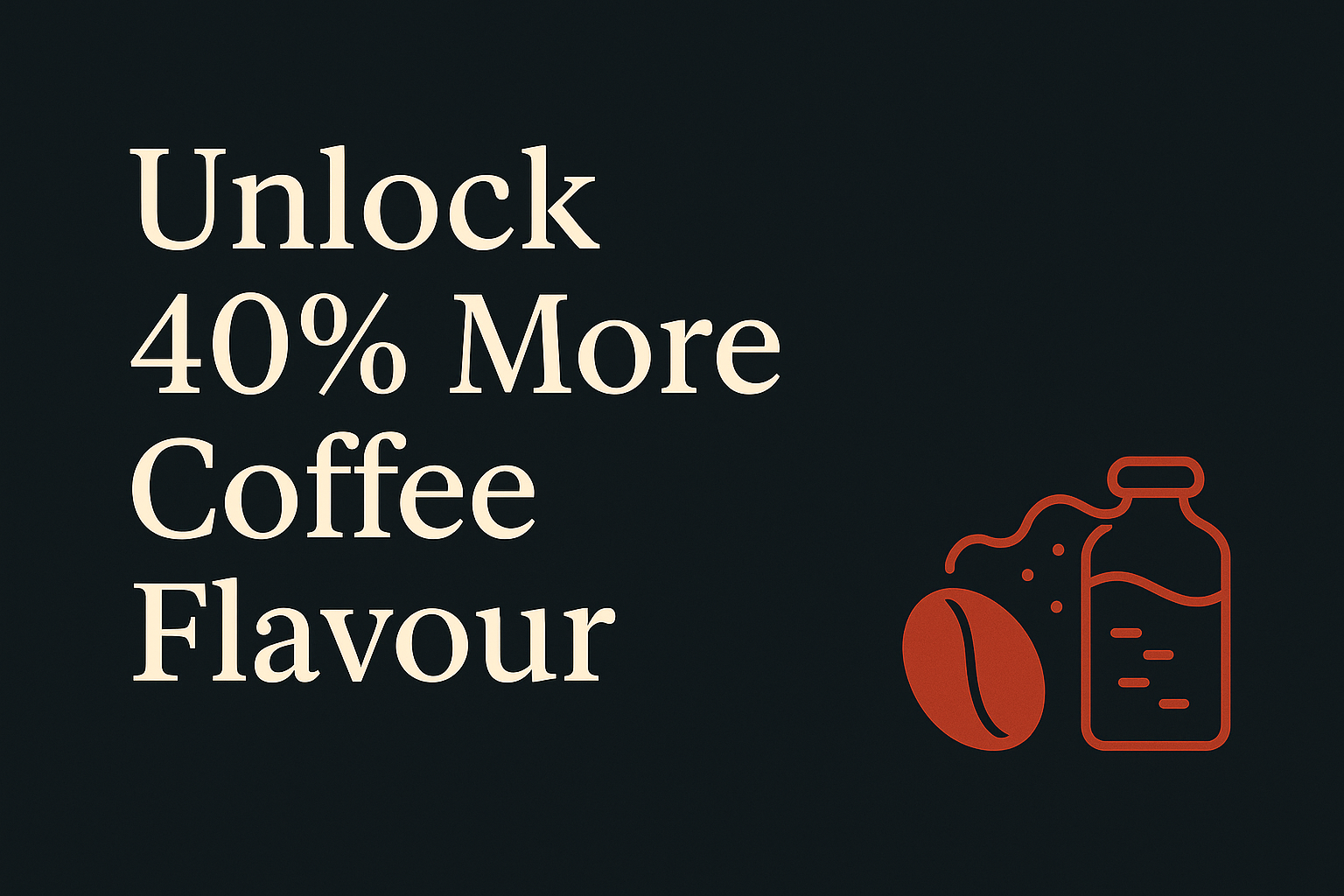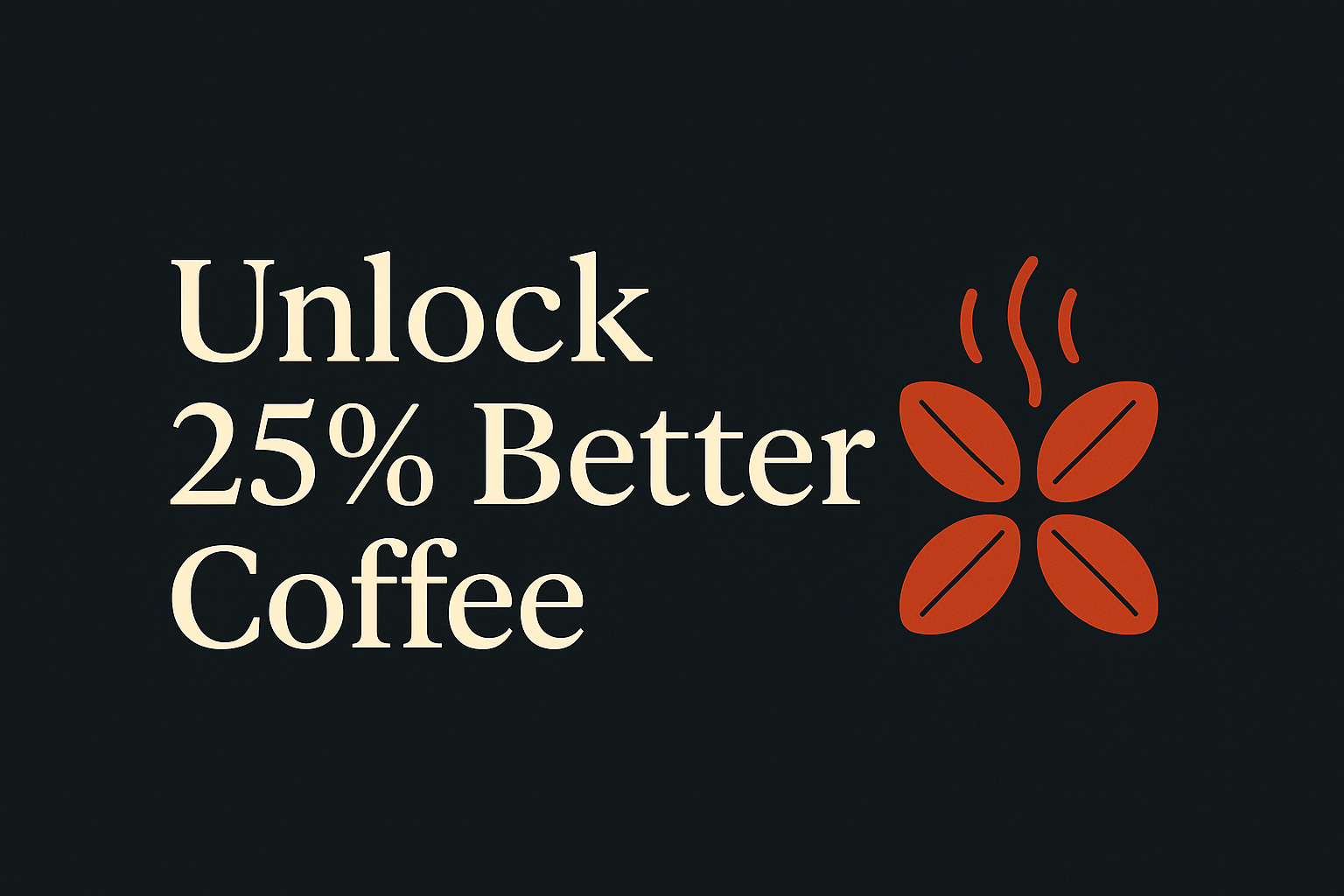
For the estimated 20% of coffee enthusiasts who experience acid sensitivity or GERD symptoms, the morning ritual doesn't have to end in discomfort. Recent scientific research reveals that specialised brewing methods can reduce coffee acidity by up to 70% without compromising the complex flavours we cherish. This transformation represents more than just accommodation—it's coffee evolution that honours both science and sensory experience.
Understanding Coffee Acidity: The Science Behind Your Morning Cup
Coffee acidity stems primarily from chlorogenic acid (CGA) and other organic compounds that contribute to brightness and complexity. While these acids create the vibrant flavours we associate with premium specialty coffee, they can trigger digestive discomfort for sensitive individuals. Traditional hot brewing methods extract significant amounts of these acids, resulting in pH levels between 4.38-4.75—well within the acidic range that can exacerbate reflux symptoms.
The breakthrough lies in understanding extraction science. Temperature, time, and technique all influence which compounds dissolve into your cup. By manipulating these variables, we can dramatically reduce acid extraction while preserving the aromatic compounds and flavour notes that make specialty coffee extraordinary.
Five Evidence-Based Methods for Low-Acid Coffee Brewing
1. Cold Brew Immersion: The Ultimate Acid Reducer
Cold brew emerges as the clear champion for acid reduction, achieving a remarkable 67-70% decrease in acidic compounds. Scientific analysis shows cold brew produces pH levels between 4.85-5.13, significantly less acidic than conventional hot brewing methods.
The technique requires patience but delivers exceptional results:
- Use a coarse grind ratio of 1:7 (coffee to water)
- Steep for 12-24 hours at room temperature
- Filter through fine mesh or paper filters
- Dilute the concentrate to taste
The extended cold extraction selectively draws out caffeine and flavour compounds while leaving behind many of the temperature-dependent acids that cause digestive distress.
2. AeroPress Low-Temperature Method
The AeroPress offers remarkable versatility for low-acid brewing, achieving 30-35% acid reduction through temperature and time manipulation. This method balances efficiency with stomach-friendly results:
- Heat water to 175-185°F (80-85°C) instead of boiling
- Use a slightly coarser grind than typical AeroPress brewing
- Brew for 1-2 minutes maximum
- Apply gentle, steady pressure during extraction
The lower temperature prevents excessive acid extraction while the shorter contact time maintains flavour integrity without over-extraction.
3. French Press with Controlled Variables
Traditional French press brewing can be optimised for 25-30% acid reduction through careful technique refinement:
- Employ a coarse grind to reduce extraction surface area
- Limit steeping time to 3-4 minutes
- Use water temperature around 185°F (85°C)
- Press slowly and serve immediately
This approach leverages the French press's natural filtration while controlling the variables that contribute to high acidity.
4. Modified Pour-Over Technique
Pour-over methods can achieve 20-25% acid reduction through strategic modifications to the traditional approach:
- Choose medium-dark to dark roast beans from our curated selection of specialty coffee beans
- Employ slower, more controlled pour rates
- Maintain water temperature around 185°F (85°C)
- Use a slightly coarser grind than standard pour-over
The slower extraction allows for better control over acid dissolution while maintaining the clarity and nuance that makes pour-over brewing exceptional.
5. Natural Acid Neutralisation
For additional acid reduction, consider adding a small amount (1/8 teaspoon per cup) of food-grade calcium carbonate or a pinch of sea salt during brewing. Research indicates this approach can reduce acidity by 15-20% while adding subtle mineral complexity to the cup.
Bean Selection and Processing Impact
Your choice of coffee beans significantly influences final acidity levels. Specialty coffees from lower-altitude regions like Brazil, Sumatra, and Guatemala naturally contain 15-25% less acid than high-altitude varietals. The growing conditions and processing methods in these regions produce beans with inherently lower chlorogenic acid content.
Roast level plays a crucial role in acid reduction. Medium-dark to dark roasts can reduce chlorogenic acid content by up to 40% compared to light roasts. The extended roasting process breaks down many acid compounds while developing the rich, complex flavours that characterise premium dark roasts.
Water Temperature and Grind Size: The Technical Details
Water temperature management represents one of the most accessible ways to reduce coffee acidity. Using water between 175-185°F (80-85°C) instead of the traditional 200-205°F (93-96°C) extracts 20-25% fewer acids while maintaining the essential flavour compounds that create coffee complexity.
Grind size affects extraction efficiency across all brewing methods. Coarse grinding exposes less surface area to water, naturally extracting 15-20% fewer acids regardless of brewing technique. This approach requires slight adjustments to brewing time or coffee-to-water ratios to maintain strength and flavour balance.
The Health and Flavour Connection
A 2024 gastroenterology study demonstrated the practical benefits of low-acid brewing methods, with subjects reporting 63% less reflux discomfort when drinking properly prepared low-acid coffee versus conventional brewing.
Remarkably, blind taste tests revealed that 74% of participants couldn't distinguish low-acid coffee from traditionally brewed cups when proper technique was employed. This finding dispels the myth that reducing acidity compromises flavour quality—instead, it often enhances the natural sweetness and reduces harsh bitterness that can mask subtle flavour notes.
Future of Low-Acid Coffee Culture
The evolution toward stomach-friendly brewing represents more than accommodation—it's expansion of coffee accessibility without compromise. Market data suggests the low-acid coffee segment will experience 28% annual growth through 2027, driven by increasing awareness of digestive health and brewing science advancement.
This growth reflects a broader shift in specialty coffee culture, where technical precision serves both flavour optimisation and inclusive enjoyment. The science of low-acid brewing demonstrates that restriction can inspire innovation, leading to discoveries that benefit all coffee enthusiasts.
Perfect Your Low-Acid Brewing Journey
Low-acid coffee brewing transforms limitation into liberation, proving that science-backed methods can deliver both digestive comfort and flavour excellence. Whether you choose the patience of cold brew, the precision of AeroPress techniques, or the controlled variables of French press brewing, each method opens new pathways to coffee enjoyment previously thought impossible.
The journey toward stomach-friendly coffee doesn't require sacrificing the rich, complex flavours that make specialty coffee extraordinary. Instead, it reveals new dimensions of taste, often uncovering subtle sweetness and nuanced notes that harsh acidity can mask. These brewing techniques don't just accommodate sensitivity—they elevate the entire coffee experience.
Start Your Low-Acid Coffee Adventure Today
Ready to transform your daily coffee ritual? Coffee on Cue's curated selection of specialty coffee beans includes low-acid varietals specifically chosen for their exceptional flavour profiles and gentle brewing characteristics. Try one for yourself today!




